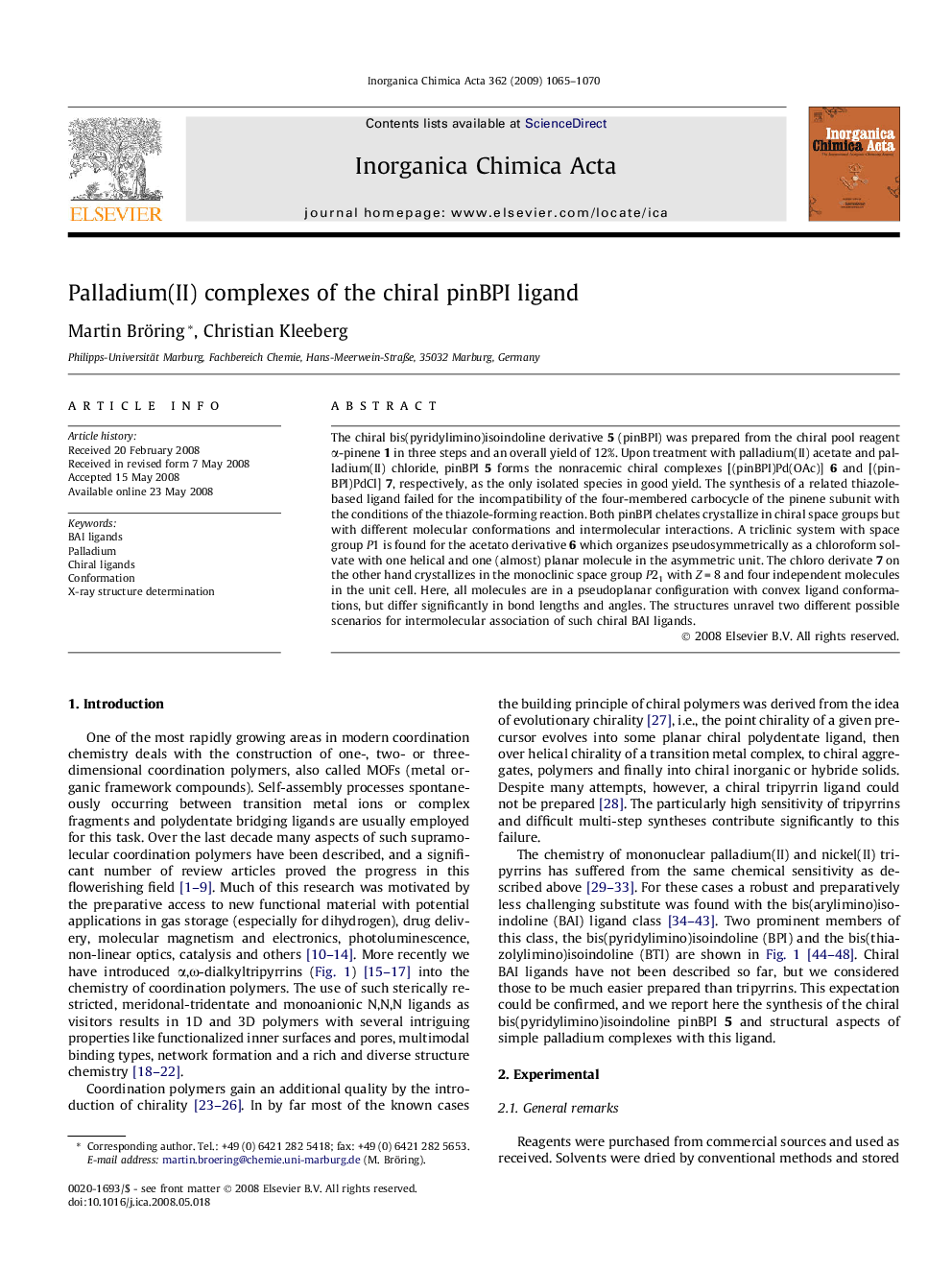| Article ID | Journal | Published Year | Pages | File Type |
|---|---|---|---|---|
| 1307034 | Inorganica Chimica Acta | 2009 | 6 Pages |
The chiral bis(pyridylimino)isoindoline derivative 5 (pinBPI) was prepared from the chiral pool reagent α-pinene 1 in three steps and an overall yield of 12%. Upon treatment with palladium(II) acetate and palladium(II) chloride, pinBPI 5 forms the nonracemic chiral complexes [(pinBPI)Pd(OAc)] 6 and [(pinBPI)PdCl] 7, respectively, as the only isolated species in good yield. The synthesis of a related thiazole-based ligand failed for the incompatibility of the four-membered carbocycle of the pinene subunit with the conditions of the thiazole-forming reaction. Both pinBPI chelates crystallize in chiral space groups but with different molecular conformations and intermolecular interactions. A triclinic system with space group P1 is found for the acetato derivative 6 which organizes pseudosymmetrically as a chloroform solvate with one helical and one (almost) planar molecule in the asymmetric unit. The chloro derivate 7 on the other hand crystallizes in the monoclinic space group P21 with Z = 8 and four independent molecules in the unit cell. Here, all molecules are in a pseudoplanar configuration with convex ligand conformations, but differ significantly in bond lengths and angles. The structures unravel two different possible scenarios for intermolecular association of such chiral BAI ligands.
Graphical abstractα-Pinene was successfully employed as a chiral pool precursor for the preparation of a chiral bis(pyridylimino)isoindoline ligand, pinBPI. Simple palladium(II) complexes of this ligand show π-stack associations in the crystal lattice that differ by the degree of rotation. While for a staggered 180° rotamer no additional stereoelement is created, transfer of chirality from the molecule to the aggregate is observed for a gauche form.Figure optionsDownload full-size imageDownload as PowerPoint slide
